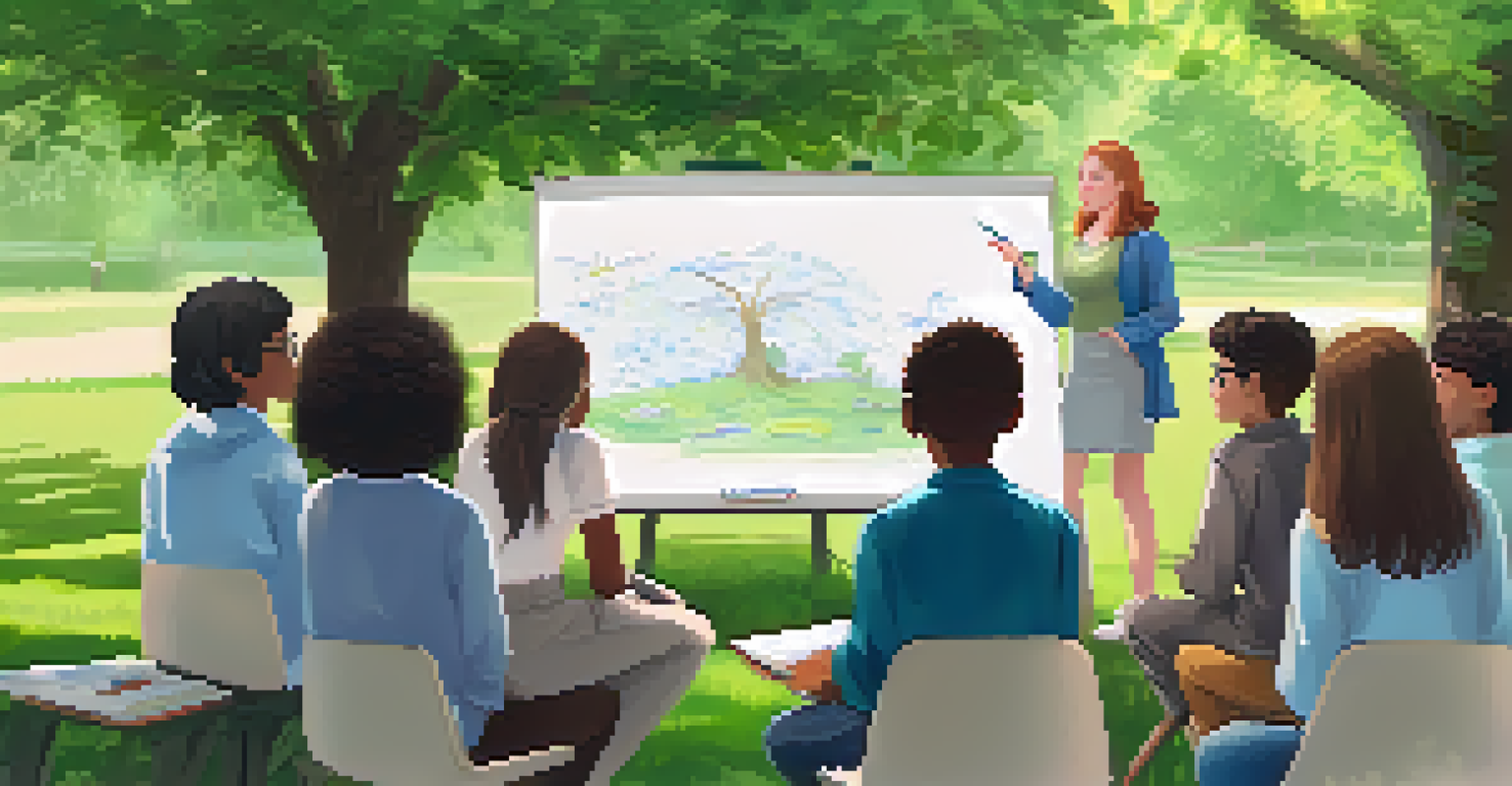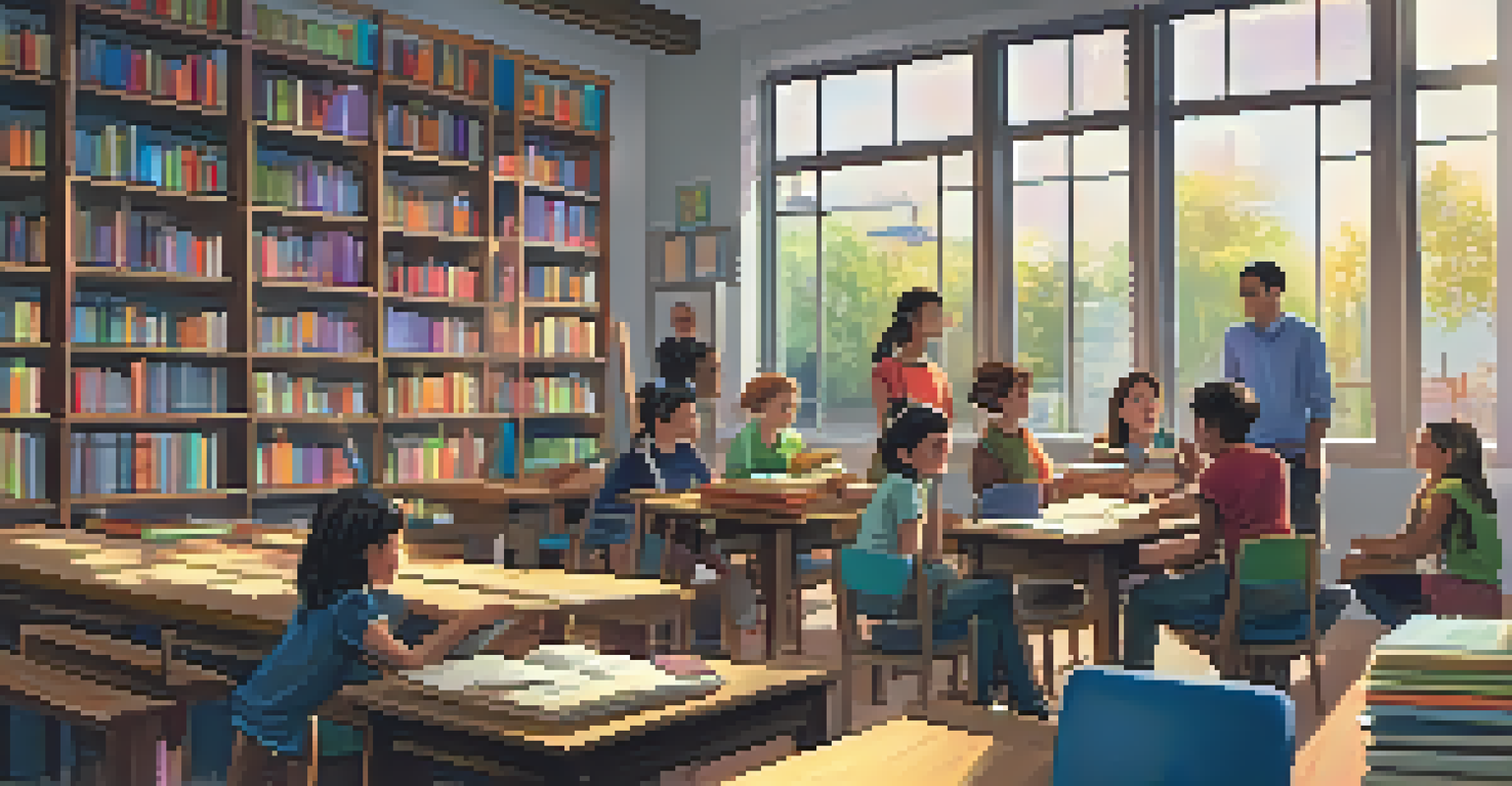The Role of Peer Teaching in Student-Centered Learning

Understanding Student-Centered Learning in Today's Classrooms
Student-centered learning shifts the focus from the teacher to the students, encouraging them to take charge of their own education. In this model, learners engage actively with the material, collaborating and sharing insights, which fosters deeper understanding. It's about creating an environment where students feel empowered to express their thoughts and participate in discussions, making learning more relevant and enjoyable.
Tell me and I forget, teach me and I remember, involve me and I learn.
This approach contrasts sharply with traditional teaching methods, where students often remain passive recipients of information. By prioritizing their interests and learning styles, educators can help students develop essential skills such as critical thinking and teamwork. The goal is to nurture lifelong learners who are enthusiastic about exploring new concepts.
As we delve deeper into the benefits of student-centered learning, it becomes clear that peer teaching plays a pivotal role in this educational approach. It provides a unique avenue for students to teach one another, reinforcing their own knowledge while assisting their peers.
Defining Peer Teaching and Its Importance
Peer teaching involves students teaching their classmates, allowing them to share knowledge and skills in a collaborative environment. This method not only helps the 'teacher' solidify their understanding but also encourages the 'learner' to engage with the material in a different light. It’s a win-win situation that can enhance comprehension and retention of information.

One of the key advantages of peer teaching is that it often reduces anxiety among students. When learning from a peer, students may feel more comfortable asking questions and seeking clarification, as they perceive their classmate as a relatable source. This can lead to more open discussions and a supportive learning atmosphere.
Empowerment through Student-Centered Learning
Student-centered learning shifts focus to students, encouraging active participation and collaboration for deeper understanding.
Moreover, peer teaching helps cultivate communication and leadership skills among students. By stepping into the role of a teacher, they learn how to present information clearly and effectively, an invaluable skill that extends beyond the classroom.
Benefits of Peer Teaching for Students
Peer teaching offers numerous benefits, including improved academic performance. Studies have shown that students who engage in teaching their peers often achieve higher test scores and a better grasp of the subject matter. This is partly because teaching requires a deeper understanding of the content, prompting students to study more thoroughly.
The best way to learn is to teach.
Additionally, this approach fosters a sense of community and belonging within the classroom. When students collaborate, they build relationships that can enhance their overall educational experience. This social aspect is crucial, as feeling connected can motivate students to participate more actively in their learning journey.
Peer teaching also helps develop critical soft skills like empathy, patience, and adaptability. As students navigate different learning styles and personalities, they learn to adjust their teaching methods, which can be incredibly beneficial in their future careers.
How Peer Teaching Enhances Engagement
One of the most significant ways peer teaching enhances engagement is through active participation. When students are tasked with teaching their peers, they become more invested in the learning process. This increased involvement often leads to greater enthusiasm for the subject matter, as they are not merely passive recipients of knowledge.
Moreover, peer teaching encourages students to ask questions and seek clarification, fostering a culture of inquiry. When students feel comfortable exploring topics together, it creates a dynamic learning environment where curiosity thrives. This can lead to richer discussions and a more profound understanding of the material.
Peer Teaching Enhances Engagement
Peer teaching fosters active participation and accountability, leading to greater enthusiasm and richer discussions among students.
Finally, the collaborative nature of peer teaching promotes accountability. Students know they must prepare adequately to teach their peers, which motivates them to engage more deeply with the content. This sense of responsibility can significantly enhance their overall learning experience.
Challenges of Implementing Peer Teaching
While peer teaching has many benefits, implementing it effectively can come with challenges. One common issue is ensuring that all students are adequately prepared to teach their peers. Without proper guidance and resources, some students may struggle to convey the material accurately, which could hinder learning.
Another challenge is managing group dynamics. Not all students work well together, and some may feel uncomfortable in a teaching role. It’s essential for educators to create an inclusive environment where every student feels valued and capable of contributing to the learning process.
Additionally, teachers must find the right balance between peer teaching and traditional instruction. While peer teaching is beneficial, it should complement, rather than replace, direct instruction from the teacher. Educators need to ensure that students are receiving a well-rounded education.
Best Practices for Effective Peer Teaching
To maximize the effectiveness of peer teaching, educators should provide clear guidelines and expectations. Setting specific objectives for each peer teaching session can help students focus on the material and understand their roles better. This clarity ensures that everyone is on the same page and working towards a common goal.
It’s also beneficial to offer training and support for students who will be teaching their peers. By equipping them with the necessary skills and strategies, educators can increase the likelihood of successful peer teaching experiences. This preparation can include workshops on effective communication and teaching techniques.
Best Practices for Effective Peer Teaching
Clear guidelines, training, and regular feedback are essential for maximizing the effectiveness of peer teaching in classrooms.
Finally, incorporating regular feedback is crucial to the peer teaching process. Encouraging students to give and receive feedback helps them reflect on their teaching and learning experiences, fostering a growth mindset. This practice not only improves their skills but also enhances their overall educational journey.
The Future of Peer Teaching in Education
As education continues to evolve, the role of peer teaching is likely to become even more significant. With the rise of technology and online learning, students are finding new ways to share knowledge and collaborate. Virtual platforms can facilitate peer teaching, allowing students to connect and learn from each other regardless of geographical barriers.
Furthermore, the emphasis on personalized learning is driving educators to adopt more student-centered approaches, including peer teaching. Schools are increasingly recognizing the importance of fostering collaboration and communication skills, which are essential for success in today’s world. Peer teaching aligns perfectly with these educational goals.

Ultimately, as we embrace the benefits of peer teaching in student-centered learning, we’re paving the way for a more engaging, inclusive, and effective educational experience. By empowering students to take an active role in their learning, we are preparing them for lifelong success.